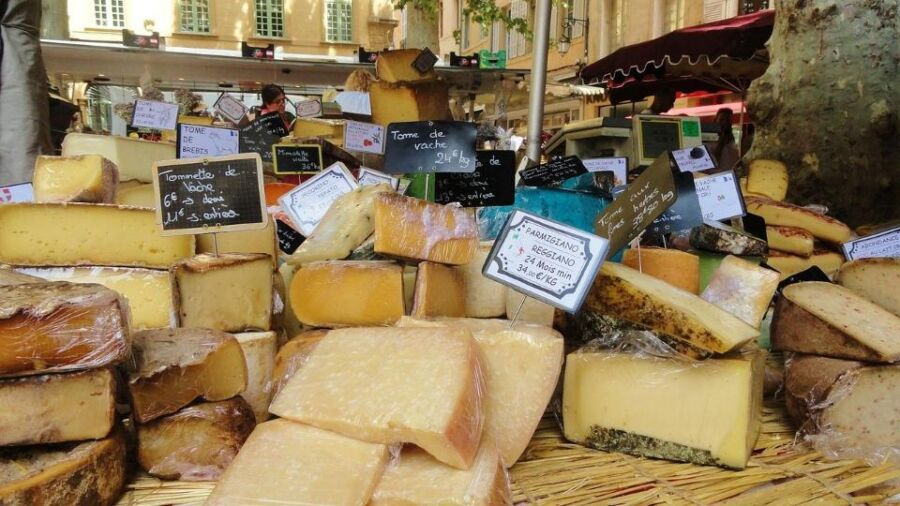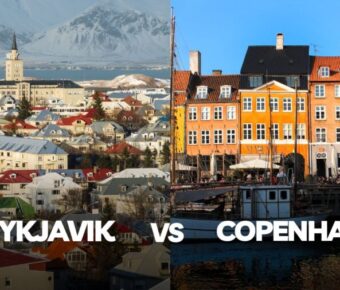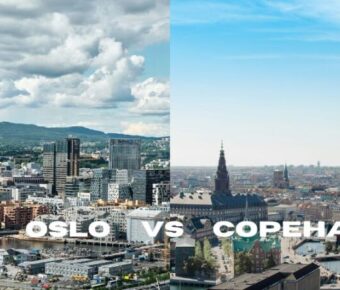
Iceland Trip Cost: 7 Budget-Savvy Tips for an Unforgettable Adventure
Planning a trip to Iceland? You’re in for an unforgettable adventure in a land of stunning natural beauty. But before you start packing your bags, you might be wondering about the cost. A trip to Iceland can range from $100 to $500 per day per person, depending on your travel style and choices.
Iceland’s otherworldly landscapes of glaciers, volcanoes, and hot springs make it a bucket-list destination. But it’s no secret that Iceland can be pricey. Don’t worry though – with some smart planning, you can experience this magical country without breaking the bank.
In this guide, we’ll break down the costs for flights, accommodation, food, activities, and transportation. You’ll learn money-saving tips and tricks to help you plan an amazing Iceland trip that fits your budget. Whether you’re a budget backpacker or looking for a bit of luxury, we’ve got you covered. Let’s dive in and start planning your Iceland adventure!
Contents
- Understanding the Basics of Iceland Travel Costs
- Currency and Daily Budget
- Seasonal Cost Variations
- Getting There: Airfare and Alternatives
- Choosing Your Flights
- Alternative Transport Options
- Travel Insurance Considerations
- Accommodation Options in Iceland
- Hotels and Resorts
- Hostels and Budget Stays
- Vacation Rentals
- Exploring Iceland: Transportation On the Ground
- Car Rentals and Insurance
- Public Transportation
- Taxis and Ride-Sharing
- Sights and Activities: Planning Your Iceland Itinerary
- Must-See Attractions
- Outdoor Adventures
- Cultural Experiences
- Iceland on a Budget: Saving While Savoring
- Dining and Food Shopping
- Enjoying Free Nature Attractions
- Discount Cards and Deals
- Final Preparations Before Your Iceland Trip
- Creating Your Budget Breakdown
- Last-Minute Checklist
- Emergency Preparations
- Frequently Asked Questions
- What are typical expenses for a one-week vacation in Iceland?
- How much should I budget for a two-week trip to Iceland?
- What is the average cost for a couple traveling to Iceland from the USA?
- Can you break down the daily costs for a four-day stay in Iceland?
- What are the main factors that make travel to Iceland expensive?
- Are there any cost-saving tips for booking vacation packages to Iceland?
- More Travel Guides
Understanding the Basics of Iceland Travel Costs
Iceland is an amazing place to visit, but it’s not cheap. You’ll need to plan your budget carefully to make the most of your trip. Let’s break down the main costs you’ll face and how they change throughout the year.
Currency and Daily Budget
Iceland uses the Icelandic króna (ISK). As a tourist, you can expect to spend about $200-300 per day. This covers the basics like food, lodging, and some activities. Here’s a rough breakdown:
- Accommodation: $100-150 per night
- Food: $50-80 per day
- Transportation: $30-50 per day
- Activities: $50-100 per day
Keep in mind, these are just averages. You can save money by choosing cheaper options or splurge on luxury experiences. Eating out is pricey, so consider cooking some meals yourself. Many hotels offer free breakfast, which can help cut costs.
Seasonal Cost Variations
Your trip costs will change depending on when you visit Iceland. Summer (June-August) is peak season, with higher prices for everything. You might pay up to 30% more for hotels and tours during this time. But you’ll get long days and milder weather.
Winter (November-March) can be cheaper, especially for flights and accommodation. Some attractions may be closed, but you’ll have a chance to see the Northern Lights. Spring and fall are good middle-ground options. You’ll find decent weather and lower prices than summer.
Remember to book early, especially for summer trips. Popular spots like the Blue Lagoon can cost around $70 per person. Look for package deals that include multiple activities to save some cash.
Getting There: Airfare and Alternatives

Flying to Iceland can be pricey, but there are ways to save money and explore other options. Let’s look at how to find the best deals on flights, consider alternative transport, and protect your trip with insurance.
Choosing Your Flights
Icelandair is a top choice for flights to Iceland, connecting over 25 destinations in Europe and North America. They often have good deals, especially if you book early. But don’t ignore budget airlines like WOW Air or Norwegian Air. These can sometimes offer cheaper fares, though you might sacrifice some comfort.
Aim to book at least a week ahead to snag lower prices. Flights to Iceland can cost anywhere from $300 to $1,100 round-trip from the US, depending on your departure city and time of year. Summer is priciest, while winter can be a bargain.
Try using Google Flights or KAYAK to compare prices. Be flexible with your travel dates if you can – flying mid-week is often cheaper than weekends.
Alternative Transport Options
If you’re already in Europe, you’ve got more choices. Ferries run from Denmark and the Faroe Islands to eastern Iceland. It’s a longer journey, but you’ll get amazing views and can bring your own car.
For the adventurous, some cruise lines stop in Iceland as part of longer itineraries. This can be a fun way to see multiple countries in one trip. Just keep in mind you’ll have limited time in each port.
Once you’re in Iceland, renting a car is popular for exploring. But if you’re on a tight budget, look into bus tours or joining group trips. These can work out cheaper than going it alone.
Travel Insurance Considerations
Don’t skimp on travel insurance for Iceland. The country’s rugged landscape and unpredictable weather mean plans can change quickly. Look for policies that cover trip cancellation, medical emergencies, and adventure activities if you plan on hiking or exploring glaciers.
Expect to pay about 4-8% of your total trip cost for comprehensive coverage. It might seem like an extra expense, but it can save you thousands if something goes wrong. Some credit cards offer travel insurance, but check the fine print – it might not be enough for Iceland’s unique risks.
Remember to get insurance as soon as you book your trip. That way, you’re covered if you need to cancel for any reason before you even leave home.
Accommodation Options in Iceland

Iceland offers a range of places to stay, from fancy hotels to budget-friendly hostels. You’ll find options to fit different travel styles and budgets across the country.
Hotels and Resorts
Booking.com lists many hotels in Iceland’s popular spots. In Reykjavik, expect to pay $100-200 per night for a decent room. Prices jump in summer and drop in winter. Smaller towns have fewer choices but can be cheaper. Some hotels include breakfast, which saves money on food costs.
Luxury resorts exist too, often in scenic areas. These can cost $300-500+ per night. They often have spas, restaurants, and amazing views. Think carefully if the splurge is worth it for your budget.
Remember to book early, especially for summer trips. The best deals go fast!
Hostels and Budget Stays
Hostels are a great way to save money in pricey Iceland. Dorm beds usually cost $30-50 per night. You’ll share a room but get to meet other travelers. Many hostels have kitchens too, so you can cook your own meals.
Guesthouses fall between hostels and hotels in price and comfort. They’re often family-run and feel homier. Prices range from $70-120 per night for a basic private room.
Camping is the cheapest option in summer. Campsites charge $10-20 per person. You’ll need your own gear though.
Vacation Rentals
Renting an apartment or house can be smart for groups or longer stays. It gives you more space and a kitchen to cook in. Prices vary a lot based on size and location. A small apartment in Reykjavik might cost $100-150 per night. A big house could be $300+.
Farm stays are a unique option in rural areas. You’ll get a taste of local life and maybe see some Icelandic horses. Prices are often similar to guesthouses.
Always read reviews before booking any rental. Make sure you know what’s included and what extra fees might apply.
Exploring Iceland: Transportation On the Ground

Getting around Iceland can be an adventure in itself. You’ve got a few main options to choose from, each with its own perks and costs to consider. Let’s break down the best ways to explore this stunning island nation.
Car Rentals and Insurance
Renting a car is often the most flexible way to see Iceland. You can stop wherever you want and explore off-the-beaten-path spots. Prices vary based on the season and car type. In summer, a small car might cost you $50-80 per day, while a 4×4 could be $100-150.
Don’t forget insurance! The basic coverage usually isn’t enough. Go for the extra protection against gravel damage and ash. It’ll add about $20-30 per day, but it’s worth it for peace of mind.
Gas is pricey in Iceland. Budget around $2-2.50 per liter (that’s about $7.50-9.50 per gallon). A full tank might set you back $70-100.
Pro tip: Book your rental car early, especially for summer trips. Prices go up as availability drops.
Public Transportation
Public buses, run by Straeto, are a cheaper option if you’re sticking to main routes. A single ride in Reykjavik costs about $4, while longer trips between towns can range from $20-50.
Bus passes can save you money. A 1-day pass in Reykjavik is around $15, while a 3-day pass is about $30. For exploring further, look into the Iceland On Your Own pass. It covers most of the Ring Road and costs about $300-400 for a week.
Buses are comfy and reliable, but they run less often in winter. Always check the schedule in advance, especially for rural areas.
Taxis and Ride-Sharing
Taxis in Iceland are safe but expensive. A short ride in Reykjavik might cost $15-20, while airport transfers can be $150 or more. There’s no Uber, but some local apps like Hopp offer similar services in Reykjavik.
For budget travelers, these aren’t great for long-distance trips. A taxi from Reykjavik to the Blue Lagoon could easily cost $100 one-way.
If you’re traveling solo or in a pair, joining a tour or finding other travelers to share rides can cut costs. Check hostel bulletin boards or travel forums for carpool options.
Sights and Activities: Planning Your Iceland Itinerary

Iceland offers a mix of stunning natural wonders and unique experiences. From geothermal pools to glaciers, there’s lots to see and do.
Must-See Attractions
The Golden Circle is a popular route with three main stops. You’ll see the Geysir geothermal area, Gullfoss waterfall, and Thingvellir National Park. It’s easy to do as a day trip from Reykjavik.
The Blue Lagoon is another top spot. This geothermal spa has milky blue waters that are great for a relaxing soak. Book tickets in advance, as it can get busy.
Don’t miss the South Coast. It’s home to black sand beaches, waterfalls, and glaciers. Vik’s Reynisfjara beach is known for its basalt columns and crashing waves.
Outdoor Adventures
Iceland is perfect for nature lovers. You can go hiking on glaciers or in national parks. Guided glacier walks let you explore ice formations up close.
Horseback riding is fun way to see the countryside. Icelandic horses are small but sturdy, and great for beginners.
In winter, chase the Northern Lights. Join a tour to hunt for the best viewing spots away from city lights. Summer visitors can enjoy the midnight sun instead.
Whale watching trips run from several coastal towns. You might spot humpbacks, minke whales, or even blue whales.
Cultural Experiences
Visit museums to learn about Iceland’s history and folklore. The National Museum in Reykjavik covers everything from settlement to modern times.
Try local foods like fermented shark or lamb hot dogs. Join a food tour to sample different dishes.
Soak in hot springs like locals do. Many towns have public pools heated by geothermal energy.
See a performance at Harpa, Reykjavik’s concert hall. Its glass facade lights up at night.
Book a walking tour to learn about Reykjavik’s street art and architecture. It’s a great way to get your bearings in the city.
Iceland on a Budget: Saving While Savoring

Traveling to Iceland doesn’t have to break the bank. With some smart planning and insider tips, you can enjoy this stunning country without emptying your wallet. Let’s explore ways to save on food, make the most of free attractions, and find great deals.
Dining and Food Shopping
Eating out in Iceland can get pricey, but there are ways to cut costs. Stock up on groceries at budget-friendly stores like Krónan or Bónus. These shops offer lower prices on basics like bread, cheese, and snacks. Pack lunches for day trips to save money.
For cheap eats, try Icelandic hot dogs from street stands. They’re tasty and won’t hurt your wallet. Some cafes offer soup with free refills – perfect for cold days. Don’t miss happy hours at bars for discounted drinks and snacks.
Tap water in Iceland is safe and free. Bring a reusable bottle to fill up instead of buying bottled water. This small change can add up to big savings over your trip.
Enjoying Free Nature Attractions
Iceland’s natural beauty is its biggest draw, and much of it is free to enjoy. Take a walk along black sand beaches or hike through lava fields without spending a penny. The Northern Lights are a breathtaking sight that won’t cost you anything to see.
Visit public hot springs like the Secret Lagoon for a fraction of the price of famous spots like the Blue Lagoon. Many towns have local pools with hot tubs that locals love. These are much cheaper than tourist spots.
Reykjavík has free walking tours where you can learn about the city’s history and culture. Just tip your guide what you think the tour was worth.
Discount Cards and Deals
Look into city cards for places you’ll visit. The Reykjavík City Card gives free entry to museums and pools, plus bus rides. It can save you money if you plan to see a lot.
Book tours and activities in advance online. You’ll often find better deals than booking on the spot. Some companies offer discounts for booking multiple tours.
Consider traveling in the shoulder season (May or September). Prices are lower than peak summer months, but the weather is still okay for most activities. You’ll also deal with fewer crowds.
Use apps like “Appy Hour” to find drink specials around Reykjavík. For accommodations, try hostels or guesthouses instead of hotels. You’ll save money and might meet other travelers to share costs with.
Final Preparations Before Your Iceland Trip

Get ready for your Iceland adventure by taking care of a few key things. Make sure you’ve got your money sorted, pack the right gear, and plan for any surprises.
Creating Your Budget Breakdown
Start by listing all your expected costs. Flights to Iceland can range from $400 to $800 round-trip from the U.S. East Coast. Hotels run about $100-200 per night, while hostels are cheaper at $30-50. Food is pricey – budget $40-60 per day for meals.
Car rental is a must for seeing Iceland’s sights. Expect to pay $50-100 daily for a small car. Gas costs around $2 per liter, so factor in $30-50 per day for fuel.
Don’t forget about activities! The Blue Lagoon costs $50-100, while glacier hikes run $150-200. Set aside $200-300 for tours and attractions.
Add it all up and you’re looking at $150-250 per person per day for a mid-range trip. Adjust based on your travel style and must-do activities.
Last-Minute Checklist
- Warm layers (even in summer!)
- Waterproof jacket and boots
- Swimsuit for hot springs
- Power adapter
- Reusable water bottle
- Sunglasses and sunscreen
- Camera or extra phone storage
- Printed copies of bookings
- Iceland guidebook or offline maps
Don’t forget to notify your bank about your travel plans. Download some helpful apps like Google Translate and a currency converter. Check the weather forecast one last time and pack accordingly.
Emergency Preparations
Get travel insurance that covers medical emergencies and trip cancellation. Iceland’s healthcare is good but can be expensive for visitors. Write down emergency numbers: 112 for police/ambulance/fire, and your embassy’s contact info.
Pack a small first-aid kit with basics like painkillers, bandages, and any personal meds. Bring extra cash in case your card doesn’t work.
Know basic Icelandic phrases like “help” (hjálp) and “emergency” (neyðartilfelli). Save offline maps of your routes in case you lose cell service while exploring remote areas.
Keep your passport safe and make digital copies of important documents. With these precautions, you’ll be ready for anything on your Iceland trip!
Frequently Asked Questions
Planning a trip to Iceland can be exciting, but it’s important to understand the costs involved. Let’s break down some common questions about budgeting for your Icelandic adventure.
What are typical expenses for a one-week vacation in Iceland?
A week in Iceland can cost around $7,800 for two people. This includes flights, lodging, food, and activities. Expect to spend about $350 per night on accommodation and $165 per person daily on meals and things to do.
Transportation adds another $100 to your daily budget. Remember, prices can vary based on your travel style and the time of year you visit.
How much should I budget for a two-week trip to Iceland?
For a two-week trip, you’ll need to double the one-week budget. Plan for about $15,600 for two people. This gives you more time to explore Iceland’s stunning landscapes and unique attractions.
Keep in mind that staying longer might help you save on daily costs. You could find better deals on longer-term car rentals or apartment stays.
What is the average cost for a couple traveling to Iceland from the USA?
A couple from the USA should budget around $7,800 for a week in Iceland. This includes about $1,460 per person for flights. Your actual costs may be higher or lower depending on where you’re flying from and when you book.
Remember to factor in extras like travel insurance and any special gear you might need for Iceland’s weather.
Can you break down the daily costs for a four-day stay in Iceland?
For a four-day trip, plan to spend about $400-$500 per day for two people. Here’s a rough breakdown:
Accommodation: $350
Food and drinks: $170
Activities: $130
Transportation: $100
This adds up to about $750 per day for a couple. Cut costs by cooking some meals or choosing budget-friendly activities.
What are the main factors that make travel to Iceland expensive?
Iceland’s high costs come from a few key factors:
- Location: Being an island nation means higher prices for imported goods.
- Limited resources: Many items need to be brought in, increasing costs.
- High living standards: Icelanders enjoy good wages, which drives up prices.
- Tourism demand: Popular spots often have steep prices due to high demand.
Are there any cost-saving tips for booking vacation packages to Iceland?
You can save money on your Iceland trip with these tips:
- Travel in the off-season (September to May) for lower prices.
- Book flights and accommodation early for better deals.
- Look for package deals that include flights, car rental, and hotels.
- Consider staying at guesthouses or hostels instead of hotels.
- Cook some of your own meals to save on food costs.



